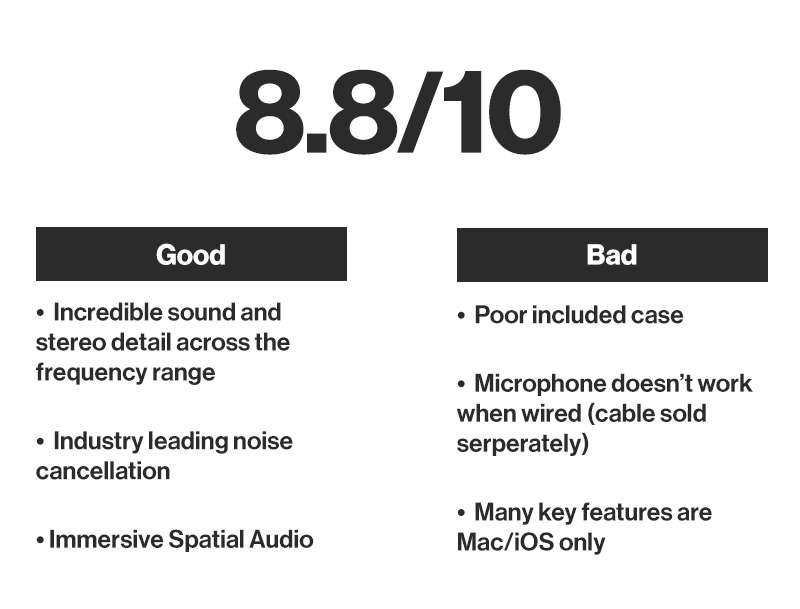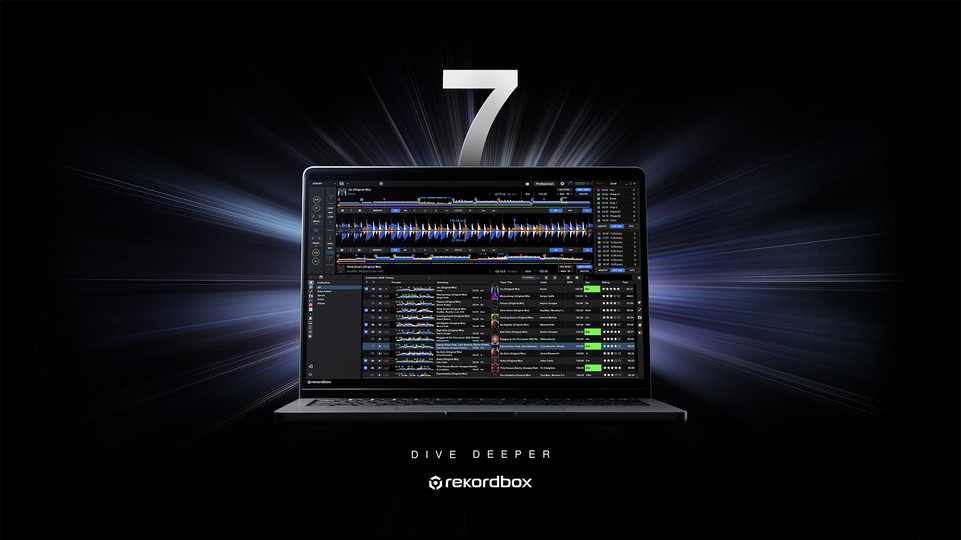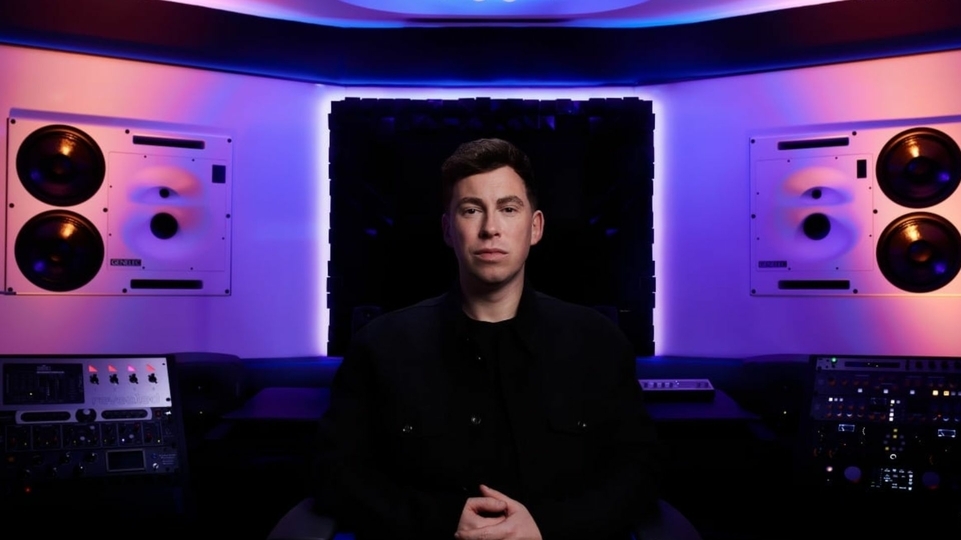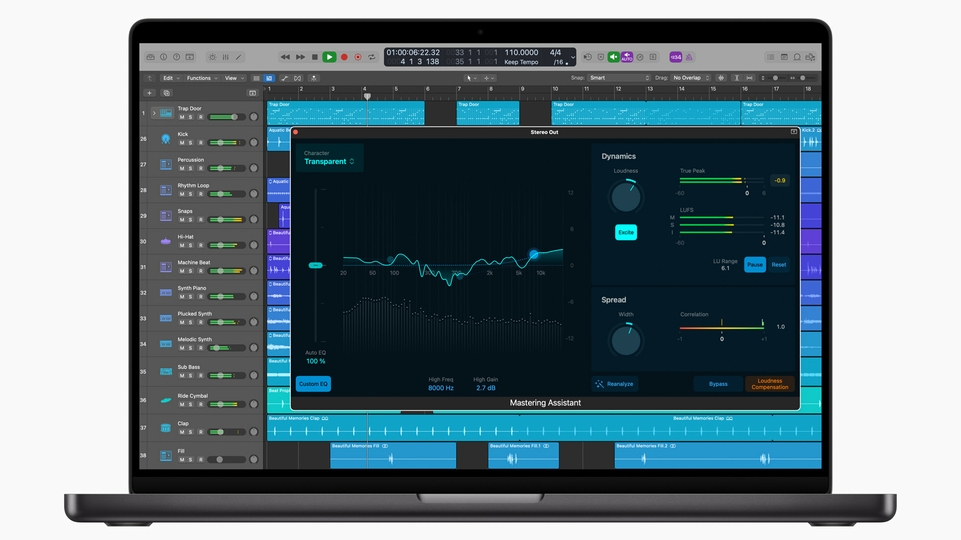
Apple AirPods Max review: the perfect luxury headphone?
Apple’s new AirPods Max aren’t cheap —but do they justify their price tag?
Apple’s AirPods division is so popular that they make more money for Apple than Spotify's entire business is worth. What started as a natural complement to the iPhone born out of an already thriving Beats division has quickly grown to become one of their fastest-growing products. In 2019, Apple launched the AirPods Pro that added Active Noise Cancellation (ANC) and a Transparency mode to quickly and safely come back to the real world when required. Though priced at the higher end of the ANC earbud spectrum at £249, they too brought with them rave reviews from those who took the plunge.
Just before Christmas 2020, Apple brought the AirPods Maxs to market, their first over-ear Apple-branded headphones, featuring a whole ream of unique and responsive technology, powered by one H1 chip per earcup with both Bluetooth 5.0 and AirPlay. The spec list is impressive: alongside Spatial Audio and ANC which we’ll get to later, Apple added a new Adaptive EQ feature that ‘listens’ to what’s coming out of the ear cup in real-time using eight different mics, compares it to the ‘dry’ version of the signal and applies an adaptive EQ that attempts to re-balance the sound.
A practical use would be, for example, when you’re wearing glasses, or if you’ve got your hair up and the mesh headband is shifted slightly, the Maxs won’t sound different — they’ll retain their consistent sound and tone regardless of physical interferences and slight movements of the earcup, or when placed on a different head with a different shape.
It’s a subtle thing, sure, but for Apple and their ethos of consistency it’s something they had to address and they’ve gone above and beyond to do so. However, you can’t turn it off so it’s not something you can really test, and any changes are so subtle we'll have to just assume it's working.
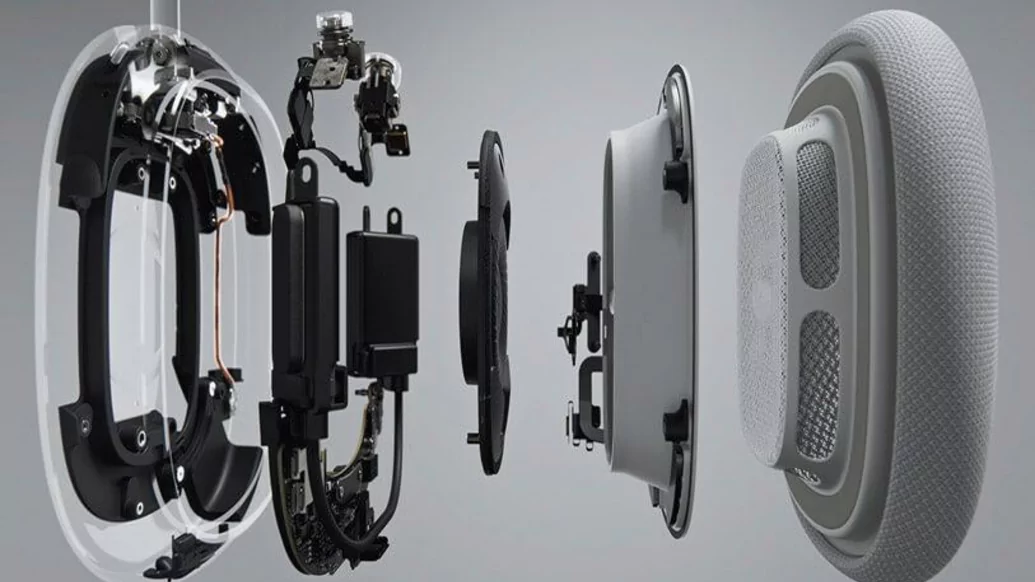

"Apple’s AirPod division is so popular that they make more money for Apple than Spotify makes from its entire business"
Another impressive spec might not be the sexiest feature, but the Maxs achieve a Total Harmonic Distortion (THD) of “less than” 1%. THD is the measurement of harmonics introduced to a signal by an amp. The lower the value, the more accurate the signal. Most studio-quality headphones would be well below 1% but it’s a bit of a red herring spec when you don’t specify the volume it was measured at. Apple says the AirPod Maxs retain less than 1% THD even at max volume. That means that when turned up to the loudest they can be, they still retain over 99% of the original signal without interference or distortion. What does that mean in reality? Let’s get into it.
The headphones don't fold down into a smaller size like most over-ears, assumedly to prevent breakages at the ear cup joint but it comes at a cost. They come with a semi-stiff case that only covers the earpads, turning the headband into a carry handle. Given the cost of the Maxs you’d expect more in terms of protection — with gaps and slots in the case, any liquid spills would easily penetrate through to the headphones, but without foldable ear cups, we assume Apple found any traditional case too big. The good thing about the case is that — like the rest of the AirPod range — the Maxs can detect when they’re placed into it and enter a low power mode immediately, eventually going into an ultra-low power mode to retain battery, turning off Bluetooth and Find My (headphones) completely. As they have no traditional off mode, this is as close to powered down as you can get.
Apple claims that with both Spatial Audio and ANC on, they can last 20 hours of listening and talking on a single charge. Often we'd use ANC with music listening for two-to-three hours and the battery would remain at 100% — very impressive. It's unlikely you're going to be disciplined enough to always put the Maxs back in their case to help with battery draining but, even if you did it only half the time, they're still good for a few days at a time without a charge. And when you do, it takes just under an hour to get them back to 100%. Apple also claims five minutes of charging gives 90mins of use, so it’s easy to blast them quickly before you head out the door. Considering the nine microphones and two H1 chips inside, battery management is impressive. It’s worth noting though that even when wired in, if the battery is at zero, they won’t work at all.
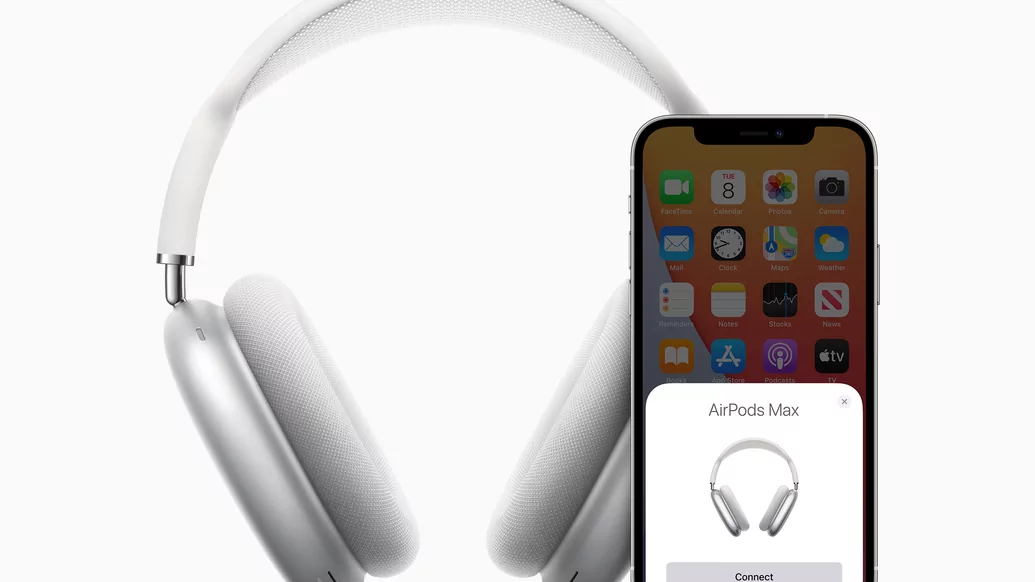

"Four [mics] on each ear cup listen ‘200 times a second’, adjusting the cancellation and the adaptive EQ to create a suitable listening environment"
AirPod Max’s ANC is also very impressive — as we mentioned, it uses eight microphones in total, one facing inwards to listen to what’s coming out of the 40mm driver and three mics on the outside to listen to the big bad world around you. With four on each ear cup, they listen ‘200 times a second’, adjusting the cancellation and the adaptive EQ to create a suitable listening environment. Used on a flight, they were extremely impressive, almost completely removing the engine noise, and once music was playing, it was next to impossible to hear anything else.
Probably more relevant to the current times, those working from home will welcome the new-found silence the Maxs provide, allowing you to focus on the work at hand without the usual distractions. Of course, noise-cancelling isn’t new, and £549 is a lot of money to splash for a bit of quiet time at home, but once the world starts moving again, the ANC is some of the best around. Transparency mode lets you quickly turn on the outside world by activating the mics, which sounds great and almost as if you’re not wearing headphones at all.
However, both settings do mildly affect the quality of the sound when turned on, most likely due to the adaptive EQ and listening mics being active. For the best sound, turning them both off when not needed is advised. There's still a degree of passive, natural cancellation when switched off, but that low rumble of everyday life becomes very noticeable. Speaking of which, they're slightly too big for everyday commuting. That's not to say they can't be used for that, but they're far more suitable for home listening and plane travel over tubes and trains.
But what of the sound, the most important part of the Maxs? Well, the AirPod Maxs sound incredible. The frequency response is definitely not flat, nor is it hyped — it feels almost perfectly appropriate for many different types of music. The warm subs support while the crisp mids deliver and the transparent highs add detail. The transients, too, are incredible pronounced without being harsh, with even sounds in similar frequency ranges being clearly discernible from one another’s peaks and troughs. The width is also impressive and even though they’re close-backed, they feel very open and each sound can be placed in the stereo field, which is also a credit to their transparency. There is quite a bit of leak at higher volumes so bear that in mind when in a public space.


"You can almost identify the thickness of the guitarist’s plectrum"
Bass and sub frequencies are often the go-to when judging a headphone’s capabilities, with some intentionally hyping the low end to achieve impressive bass rumble. AirPod Maxs walk a very fine line where the bass is always present, but never overbearing, providing an honest reflection of low end without being totally flat like a reference headphone. Apple doesn’t provide a frequency curve for the Maxs but if we were to guess, it’d be a subtle, arching boost rather than any bumps that could add to resonance or peaks on certain notes or moments.
In fact, every frequency range compliments the next, as it should be, making the Maxs an engrossing listening experience. They will always shine more with music that cherishes the stereo field and depth like Clint Mansell or Morricone’s cinematic scores, but electronic tracks also come across as expansive rather than in-your-face or over-compressed. The THD stat we mentioned earlier means that noting ever feels too up-front or dominating – everything has its place in both the frequency and stereo spectrums.
So often, low end comes at the expense of width, and vice versa, but the Maxs balance both expertly. Both Bicep’s sub-heavy ‘Sundial’ and Rian Treanor’s sequenced disorder on ‘Obstacle 3’ are clear, crisp and weighty, but never too up-front or smeared, even at the highest volume. You can hear the crack of the drum stick on the snare on Roy Ayers’ ‘Running Away’. On Sade’s ‘Nothing Can Come Between Us’, the separation of instruments is such that you feel that you’re in the room during the recording — you can almost identify the thickness of the guitarist’s plectrum. Simply put: they sound amazing. But at £549, they should.
For DJs and producers who might want to stretch the cost of the headphones by using them to make music, or even DJ with, you’ll need to invest in Apple’s Lightning to 3.5mm cable to use them wired — or if you already have a high-end amp that doesn’t support Bluetooth or AirPlay. The latency isn’t as bad as other wireless headphones in Ableton Live, but it’d make it near impossible to play in any MIDI, especially drums, so the cable is your best shout. It costs £35 and you can’t use the Lightning to female 3.5mm adaptor you got with your iPhone, annoyingly. Also, if you wanted to stretch it even further and use the Maxs as gaming headphones, the microphone doesn’t work when using the headphones wired, which is a real shame as it would have helped justify the cost somewhat more.


"These are not mixing headphones — they’re definitely not flat enough for that"
While it might go without saying, it’s worth pointing out these are not mixing headphones — they’re definitely not flat enough for that. But they’re usable for writing or basic arranging on the go. Given that they’re perfect travel headphones, you won’t need to pack a second pair for music-making as long as you’re not doing anything more than sketching ideas.
Finally, Spatial Audio might not be a huge priority to DJ Mag readers, but it’s a very impressive feature all the same, allowing true cinematic response from compatible streaming platforms and videos. It creates a realistic ‘surround sound’ using Apple’s own API — which they say is compatible with any stereo audio — and really does offer the most realistic, immersive and cinematic experience we’ve ever heard on headphones. Even more impressively, when using iPad or iPhone, the AirPod Maxs track the position of your head so the audio remains immersive — the source of the sound always remains with the actor on screen, for example, even if you move the device. Due to the lack of gyroscopic chips, this doesn’t currently work with the MacBook range. At the time of writing, Netflix is not yet compatible but Disney+ has since added the feature with more expected to follow.
When writing a review of a £500+ headphone, it feels hard to justify even the most impressive of feature sets and sound response with the price tag. There are some pro-end mixing headphones in that price range and beyond, but given they’re a professional purchase and an investment in your work, it’s easier to swallow. AirPod Maxs are not an investment in you or your craft, but are a luxury item that do what they do better than any comparable headphone available right now. The sound is exquisite — you’ll find yourself going back to your favourite albums just to hear them through the Maxs as if hearing them for the first time. The noise cancelling is alarmingly good, and spatial audio is the cherry on top.
Yes, you could stretch the cost by using them for writing on the road, a moment of zen working from home, or maybe even DJing if you’re brave enough to take them to the club (they do sit on your head comfortably when using only one ear but they’re definitely not designed for the booth). But they’re not going to be your mixing headphones, and you’ll still need to drop another £35 to lose the latency, and the lack of microphone when wired is a big shame.
As with a lot of Apple products, they’re sensationally good, but come at a cost. And if you’re not already indoctrinated in the Apple ecosystem, don’t even consider the Maxs — a lot of their benefits are iOS/Mac-only, such as seamless device switching, auto-pausing when headphones are removed, and Spatial Audio. For DJs who travelled every weekend pre-2020, they’re a perfect, albeit luxury choice for one-size-fits-all movie-watching, DJ mix-making, idea sketching, promo listening, cans once the world starts turning again. For everyone else, you’ll have to find your own way to justify the price tag.
